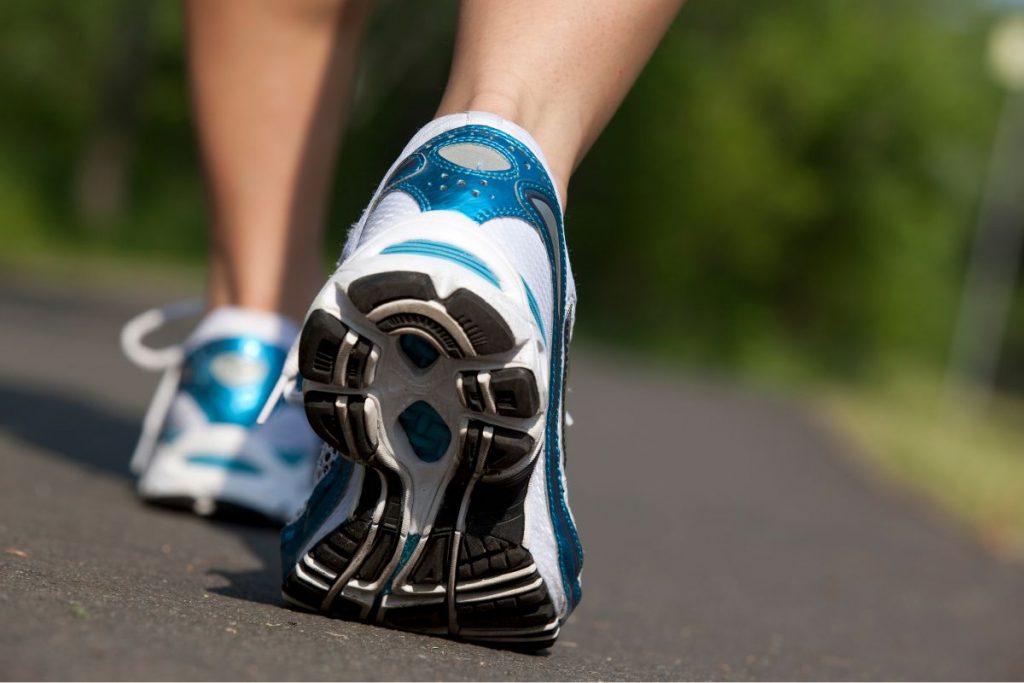What questions do people around the world ask about running? In this guide, I take you through the most common search phrases people in the US* use when searching for the keyword “running” and the volume of searches within these words. I will also answer the most frequently asked questions about these keywords.
Why This Information Is Beneficial?

Providing people with information about what others are searching for online in the context of running can be immensely beneficial, both for individuals interested in the sport and for businesses within the fitness industry. For one, it helps identify the latest trends and interests within the running community, such as popular running routes, the best running gear, or emerging training techniques.
This information can guide runners to improve their performance, find motivation, and connect with like-minded individuals or communities, enhancing their overall running experience.
For businesses and content creators in the fitness sector, understanding what people search for online offers valuable insights into consumer behavior and preferences. It enables them to tailor their products, services, and content to meet the specific needs and interests of their target audience.
For instance, if there’s a surge in searches for “marathon training plans for beginners,” fitness coaches and sports brands can create relevant training programs, workshops, or gear tailored to novices. This alignment not only boosts customer satisfaction and engagement but also positions these businesses as go-to resources within the running community, fostering loyalty and driving growth.
In essence, access to this search data acts as a bridge, connecting the dots between demand and supply, and enhancing the running ecosystem for both individuals and businesses.
The Most Searched Terms in Running in the US in 2024

Here, I’m highlighting the highest search volume for running in the US and giving you the answers to these questions. I haven’t put the keywords in any particular order of popularity and you can see the number of searches in the US below the phrases themselves.
I haven’t put the keywords in any particular order of popularity and you’ll see the number of searches in the US below the phrases themselves.
I also haven’t included any products in this summary, I’m taking them separately. For example, keywords like “running shoes” and “running pace calculator” have a very high search volume, but I’ll cover these in a separate post.
Will Running Give You Abs?

Search volume 2.4K
Running can contribute to developing abs, but with some caveats. Running is primarily a cardiovascular exercise that helps burn calories and reduce body fat, including the fat that covers abdominal muscles. If you have a lower body fat percentage, your abs are more likely to become visible. However, having visible abs also depends on your overall body composition, genetics, and especially your diet.
For more defined abs, you should combine running with strength training exercises targeting the abdominal muscles, such as planks, crunches, and leg raises. These exercises help build the muscle mass necessary for abs to be more pronounced. Additionally, maintaining a healthy, balanced diet is crucial because even with extensive exercise, abs won’t show if they’re covered by a layer of fat.
In summary, while running can aid in fat loss and potentially make abs more visible by lowering overall body fat percentage, it’s not sufficient on its own for developing defined abs. A comprehensive approach including targeted abdominal exercises, cardiovascular activities like running, and a proper diet is essential for achieving visible abs.
Are Running Shoes Good for Walking?

Search volume: 1.3K
Running shoes can indeed be good for walking, offering several benefits due to their design and features. They are crafted to provide support, cushioning, and stability, which are essential not only for running but also for comfortable walking, especially over long distances or varied terrains. Here’s why running shoes can be beneficial for walking:
- Cushioning: Running shoes are designed with ample cushioning to absorb the impact of each foot strike. This cushioning reduces the stress on your feet, ankles, knees, and hips, making them suitable for walking, particularly for people who experience joint pain or discomfort.
- Support: Many running shoes offer targeted support to different parts of the foot, which can help in maintaining proper foot alignment. This is beneficial for walkers, especially those with specific foot conditions such as flat feet or overpronation.
- Flexibility: Running shoes are designed to accommodate the foot’s natural flexing and bending motions, which can make them more comfortable for walking compared to stiffer types of footwear.
- Breathability: The materials used in running shoes often promote good air circulation, keeping your feet cooler and more comfortable during long walks.
However, it’s important to note that while running shoes can be suitable for walking, the reverse may not always be true. Walking shoes might not provide the necessary cushioning and support for the repetitive impact of running. Moreover, running and walking shoes are designed with different types of movement in mind, meaning the wear patterns will differ based on the activity.
When choosing running shoes for walking, consider your foot type, any existing foot conditions, and the kind of walking you’ll be doing. It’s always a good idea to choose a shoe that fits well, supports your walking style, and feels comfortable over long distances.
Running Can Lose Weight

Search volume: 390
Running is an effective way to lose weight, as it is one of the most efficient calorie-burning exercises. The amount of calories burned while running depends on various factors, including your weight, running pace, and the duration of your run. Here’s why running can be beneficial for weight loss:
- High Caloric Burn: Running burns a significant number of calories. For example, a person weighing around 155 pounds (70 kg) can burn approximately 300 calories by running at a moderate pace for 30 minutes. The faster and longer you run, the more calories you’ll burn.
- Afterburn Effect: Running at a high intensity can lead to the afterburn effect, technically known as excess post-exercise oxygen consumption (EPOC), where your body continues to burn more calories after your run as it returns to its resting state.
- Appetite Regulation: Some studies suggest that high-intensity exercise like running can help regulate appetite hormones, making you feel less hungry after workouts. However, this effect can vary among individuals.
- Fat Loss: Regular running helps reduce body fat percentage. It not only helps burn visceral fat (the belly fat that surrounds your organs) but also subcutaneous fat, leading to improved body composition.
- Boosts Metabolism: Regular exercise, including running, can increase your metabolic rate, meaning you burn more calories at rest.
For effective weight loss, it’s important to combine running with a healthy diet. Consuming more calories than you burn, even with regular running, can lead to weight gain or prevent weight loss. Additionally, consistency and gradually increasing the intensity and duration of your runs can help prevent plateaus and continue weight loss progress.
It’s also beneficial to include strength training in your routine to build muscle, which can further enhance metabolism and support weight loss. Remember, weight loss is a gradual process, and a combination of cardiovascular exercise, strength training, and a balanced diet is the most effective approach.
Can Running Burn Belly Fat?

Search volume: 4.4K
Yes, running can help burn belly fat. It is an effective way to lose fat overall, including abdominal fat, because it burns a significant number of calories. When you run, your body uses energy from fat and carbohydrates as fuel. Consistent running sessions can create a caloric deficit, necessary for weight loss, including reducing belly fat.
The calories are the crux of maintaining a healthy weight and protein ratio. The caloriecalculator.health assists people in maintaining their caloric deficit. The caloric deficit provides the people with the ultimate ratio of the protein to fat ratio.
However, it’s important to note that spot reduction, or losing fat from a specific area of your body through exercise alone, is not considered effective. When you lose weight, you do so in a pattern that is predetermined by genetics, and you cannot target where the fat loss will occur first. Running will help reduce overall body fat, and over time, this includes fat stored around the abdomen.
Can Running Build Muscle?
Running can contribute to building muscle, particularly in the lower body, but its effectiveness in muscle building is different from that of resistance training. The extent to which running builds muscle depends on several factors, including the type of running you do, your diet, and your overall fitness routine. Here’s how running can impact muscle growth:
Types of Running and Muscle Building
- Sprint Training: High-intensity sprinting can lead to significant muscle growth in the legs. Sprinting is a powerful, explosive form of running that engages the fast-twitch muscle fibers, which are responsible for size and strength. Incorporating sprint workouts into your routine can help build muscle in your calves, quads, hamstrings, and glutes.
- Hill Running: Running uphill is another form of high-intensity workout that targets the lower body muscles more aggressively than running on flat terrain. The added resistance of the incline forces your muscles to work harder, which can contribute to muscle building.
- Long-Distance Running: While long-distance running is typically associated with endurance rather than muscle growth, it can still help tone and strengthen the leg muscles. However, excessive long-distance running without adequate nutrition and recovery can lead to muscle breakdown rather than growth, as the body may start to use muscle protein as a fuel source.
Nutrition and Recovery
- Protein Intake: Adequate protein consumption is essential for muscle repair and growth. Ensure your diet includes sufficient protein to support your running and muscle-building goals.
- Recovery: Muscle growth occurs during periods of rest and recovery. Ensure you’re getting enough sleep and giving your muscles time to recover between intense running sessions or sprint workouts.
Complementary Strength Training
- To maximize muscle growth, complement your running with strength training exercises targeting both the upper and lower body. Resistance training is more effective for building muscle mass due to the higher loads and specific focus on muscle hypertrophy.
Overall Impact
Running can help build and tone muscles, especially with sprinting or hill running, but it’s not the most efficient way to increase muscle mass significantly. For optimal muscle growth, combine running with strength training and pay close attention to your diet and recovery.
This balanced approach will help you build stronger, more defined muscles while also benefiting from the cardiovascular, endurance, and mental health benefits of running.
Can Running Lower Blood Pressure?

Yes, running can help lower blood pressure. It is an effective form of aerobic exercise that improves cardiovascular health, contributing to lower blood pressure levels over time. Here’s how running influences blood pressure:
Mechanisms
- Improves Heart Health: Regular running strengthens the heart, enabling it to pump blood more efficiently with less effort. This decreases the force on arteries, thereby reducing blood pressure.
- Increases Blood Vessel Flexibility: Aerobic exercise like running can increase the flexibility and diameter of blood vessels, improving circulation and lowering blood pressure.
- Reduces Weight: Running is an effective way to burn calories and reduce weight. Weight loss is beneficial for lowering blood pressure, as excess weight can strain the heart and increase blood pressure.
- Lowers Stress: Exercise, including running, is known to reduce stress levels. Since stress can temporarily increase blood pressure, managing stress through running can contribute to overall lower blood pressure levels.
Evidence
Numerous studies support the role of regular aerobic exercise in reducing high blood pressure. The American Heart Association recommends at least 150 minutes of moderate-intensity aerobic exercise per week, such as brisk walking or running, to lower blood pressure and improve heart health.
Considerations
- Consistency is Key: Regular, consistent aerobic exercise is necessary for sustained blood pressure reduction. Occasional exercise may not have the same benefits.
- Start Gradually: If you’re new to exercise or have high blood pressure, it’s important to start slowly and gradually increase intensity and duration to avoid putting too much strain on your heart initially.
- Monitor Your Blood Pressure: If you have high blood pressure, monitor your levels regularly to ensure your exercise program is effective and safe.
- Consult a Healthcare Provider: Before starting any new exercise regimen, especially if you have hypertension or other health conditions, consult with a healthcare provider for personalized advice and safety guidelines.
Summary
Running, as part of a healthy lifestyle that includes a balanced diet, stress management, and regular physical activity, can play a significant role in lowering and managing blood pressure. It’s one component of a comprehensive approach to cardiovascular health.
How Running Changes Your Body

Search volume: 320
Running regularly can lead to numerous changes and benefits for your body, impacting your physical health, fitness, and overall well-being in several ways:
Cardiovascular Improvements
- Increased Heart Efficiency: Running strengthens the heart, increasing its efficiency in pumping blood. This can lead to a lower resting heart rate and lower blood pressure, reducing the risk of heart disease.
- Improved Circulation: Enhanced circulation means better oxygen and nutrient delivery throughout the body, which can improve overall health and endurance.
Musculoskeletal Strength and Endurance
- Stronger Muscles: Running engages multiple muscle groups, particularly in the legs, hips, and core, leading to increased muscle tone and strength.
- Bone Density: As a weight-bearing exercise, running can help build stronger bones and prevent osteoporosis by increasing bone density.
- Joint Health: Regular running can strengthen the ligaments and tendons around your joints, potentially improving their function and durability. However, it’s important to run with proper form and not overdo it to avoid joint stress.
Weight Management
- Calorie Burn: Running is one of the most effective exercises for burning calories, which can help with weight loss or maintaining a healthy weight.
- Metabolism Boost: Regular running can increase your metabolic rate, even when you’re at rest, aiding in weight management.
Mental and Emotional Benefits
- Mood Enhancement: Running can lead to the release of endorphins, often referred to as the “runner’s high,” which can improve mood and decrease feelings of depression and anxiety.
- Stress Reduction: Physical activity like running can reduce stress levels, providing a sense of calm and improving sleep quality.
Physical Appearance
- Body Composition: Running can change your body composition by reducing body fat percentage and increasing muscle tone, leading to a leaner physique.
- Skin Health: Improved circulation from regular running can also have a positive effect on your skin, providing it with nutrients and oxygen that may enhance its appearance.
Longevity
- Increased Lifespan: Studies have shown that regular runners tend to have a longer lifespan compared to non-runners, thanks in part to the wide range of health benefits running offers.
It’s important to approach running with a balanced perspective, incorporating rest days, proper nutrition, and cross-training to avoid injuries and ensure that the changes to your body are positive and sustainable. Additionally, starting with a manageable routine and gradually increasing intensity and duration can help maximize the benefits while minimizing the risks.
Running vs. Walking

Search volume: 2.9K
Running and walking are both excellent forms of cardiovascular exercise that offer significant health benefits, but they differ in intensity, calorie burn, and impact on the body. Here’s a comparison of the two activities:
Intensity
- Running is a high-intensity exercise that requires more effort from the heart, lungs, and muscles compared to walking. It leads to faster improvements in cardiovascular fitness.
- Walking, especially at a leisurely pace, is a low to moderate-intensity exercise that can be maintained for longer periods. It’s less stressful on the body, making it a more sustainable daily activity for many people.
Calorie Burn
- Running burns more calories per minute than walking due to the increased effort and energy required. This makes it more efficient for weight loss or weight management in shorter periods.
- Walking burns fewer calories per minute, but extended walking sessions can significantly contribute to calorie burn and fitness, especially for those who prefer not to run or are unable to due to physical limitations.
Impact on the Body
- Running has a higher impact on the joints, including the knees, hips, and ankles, due to the force of landing with each stride. This can increase the risk of injury if proper form, supportive footwear, and adequate recovery are not considered.
- Walking is low-impact, making it gentler on the joints and a better option for individuals with joint issues, overweight individuals, or those recovering from injury.
Health Benefits
Both running and walking offer numerous health benefits, including improved cardiovascular health, better mood, increased endurance, weight management, and reduced risk of chronic diseases. The choice between the two often depends on individual preferences, fitness levels, and health conditions.
Time Efficiency
- Running is more time-efficient for achieving certain health and fitness goals due to the higher calorie burn and cardiovascular challenge in a shorter period.
- Walking may require more time to achieve the same fitness and calorie-burning benefits as running, but it’s often more accessible and enjoyable for a broader range of people.
Mental Health Benefits
Both activities can reduce stress, anxiety, and depression, but many find the moderate intensity of walking, especially in nature, to be particularly calming and restorative.
Which Is Better?
Neither activity is “better” overall; the choice depends on your goals, health status, and what you enjoy. If you’re looking for efficient calorie burn and improving cardiovascular fitness quickly, running might be more suitable.
If you prefer a gentler, more sustainable form of exercise that you can do for longer periods, or if you have joint concerns, walking might be the better choice. Many people find incorporating both running and walking into their routines provides a balanced approach to fitness and health.
What Running Shoes Should I Buy?

Choosing the right running shoes is crucial for comfort, injury prevention, and performance. The best shoe for you depends on several factors, including your foot type, running style, and the surfaces you run on. Here are some general guidelines to help you find the right running shoes:
1. Know Your Foot Type
- Neutral: If you have a neutral arch, look for shoes that offer a balance of cushioning and support.
- Flat Feet (Overpronation): Look for shoes with stability or motion control to help distribute the impact more evenly.
- High Arches (Underpronation/Supination): Cushioned shoes with a softer midsole help absorb shock.
2. Consider Your Running Surface
- Road Running Shoes: Designed for pavement and occasional forays onto packed surfaces with slight irregularities. They’re light and flexible.
- Trail Running Shoes: Offer extra traction, stability, and durability to handle rocks, mud, and roots.
- Track Running Shoes: For running on a track, lightweight shoes with good traction are ideal.
3. Determine Your Running Style
- Heel Striker: Most runners are heel strikers and need shoes with excellent heel cushioning.
- Midfoot or Forefoot Striker: Look for shoes with more cushioning towards the front or a balanced cushioning throughout.
4. Fit and Comfort
- Proper Fit: There should be about a thumb’s width of space between the front of the shoe and your longest toe.
- Comfort: It’s the most critical aspect. The shoes should feel good right away without a breaking-in period.
5. Other Considerations
- Try Shoes in the Afternoon: Feet typically swell throughout the day, so trying on shoes later can help you find a better fit.
- Wear Running Socks: When trying on shoes, wear the socks you plan to run in.
- Use Orthotics? Bring Them Along: If you use custom orthotics or insoles, bring them with you to ensure they fit well with the new shoes.
Final Tips
- Visit a Specialty Running Store: If possible, visit a store specializing in running shoes. Many offer gait analysis and can recommend the best shoes for your running style and foot type.
- Research: Once you have some recommendations, look up reviews to see how the shoes perform in real-world conditions.
- Replace Regularly: Running shoes should be replaced every 300-500 miles to ensure they provide proper support and cushioning.
Remember, the right shoes for someone else might not be the right shoes for you. It’s about finding what fits best for your feet and your running needs.
Running and Lifting

Search volume: 1.6K
Combining running and weight lifting into your fitness routine can offer a comprehensive approach to improving overall health, fitness, and body composition. Each form of exercise contributes uniquely to your physical development, and together, they can lead to balanced, well-rounded fitness outcomes.
Here are some of the benefits and considerations for integrating running and lifting:
Benefits of Combining Running and Lifting
- Enhanced Cardiovascular Fitness: Running improves cardiovascular endurance and efficiency, which can benefit your lifting sessions by increasing stamina and recovery between sets.
- Increased Muscle Strength and Mass: Weight lifting builds muscle strength and size, which can improve running performance by increasing power and efficiency. Stronger muscles can also help in injury prevention.
- Improved Body Composition: This combination is effective for fat loss and muscle gain, leading to a more toned and athletic physique. Running helps burn calories and reduce body fat, while lifting supports muscle growth and metabolism.
- Balanced Fitness: Incorporating both aerobic (running) and anaerobic (lifting) exercises ensures a balanced approach to fitness, addressing both cardiovascular health and muscular strength.
- Reduced Risk of Overuse Injuries: Alternating between running and lifting can help prevent overuse injuries by not overstraining the same muscles repetitively. It encourages recovery and reduces the risk of common running injuries.
- Mental Health Benefits: The variety of running and lifting can keep your routine interesting, helping to maintain motivation and mental engagement. Both activities also produce endorphins, contributing to a positive mood and mental well-being.
Considerations for Combining Running and Lifting
- Balance Intensity and Volume: It’s important to balance the intensity and volume of both activities to avoid overtraining and ensure adequate recovery. Starting with moderate intensity and gradually increasing can help your body adapt.
- Prioritize Based on Goals: If your primary goal is to improve running performance, prioritize running in your training while using lifting to support that goal with strength work. If muscle gain is your main objective, focus more on lifting while using running for cardiovascular health.
- Schedule for Recovery: Allow sufficient recovery between intense running sessions and heavy lifting days. Many athletes prefer to run and lift on separate days or do one activity in the morning and the other in the evening.
- Nutrition and Hydration: Supporting your training with proper nutrition and hydration is crucial. Ensure you’re consuming enough protein for muscle repair and recovery, and maintain a balanced diet to fuel both running and lifting activities.
- Flexibility and Mobility Work: Incorporate flexibility and mobility exercises into your routine to improve muscle function and reduce the risk of injury. This is especially important when combining high-impact activities like running with the muscle-loading nature of lifting.
By thoughtfully integrating running and weight lifting into your fitness regimen, you can achieve a harmonious balance that promotes endurance, strength, flexibility, and overall health. Always listen to your body and adjust your training as needed to align with your fitness goals and physical condition.
Running is Bad for You

Search volume: 1.6K
The statement “Running is bad for you” is a simplification that doesn’t fully capture the complexities of how running affects health. Like any form of physical activity, running has both benefits and potential drawbacks, depending on how it is practiced. Here’s a more nuanced view:
Benefits of Running
- Cardiovascular Health: Regular running improves heart health, increasing cardiovascular efficiency and lowering the risk of heart disease.
- Weight Management: It’s an effective way to burn calories, help manage body weight, and reduce body fat.
- Mental Health: Running has been shown to decrease symptoms of depression and anxiety, improve mood, and boost self-esteem.
- Bone Density: Weight-bearing exercises like running can help maintain bone density, reducing the risk of osteoporosis.
- Longevity: Studies have linked regular running to increased lifespan, showing that runners tend to live longer than non-runners.
Potential Drawbacks
- Injury Risk: Running, especially without proper form, on hard surfaces, or in inadequate footwear, can increase the risk of injuries such as shin splints, stress fractures, and knee issues.
- Joint Stress: High-impact nature of running can put stress on joints, particularly the knees, hips, and ankles, which might be problematic for some people, especially those with pre-existing conditions.
- Overuse Injuries: Without adequate rest and recovery, the repetitive motion of running can lead to overuse injuries.
- Not for Everyone: Running might not be suitable for individuals with certain health conditions or preferences for other forms of exercise.
Whether running is “good” or “bad” for you depends on individual factors such as your health status, running technique, and how you incorporate it into your lifestyle. Running in moderation, with proper form and footwear, and incorporating rest and cross-training to prevent overuse injuries, can make it a beneficial part of a balanced exercise regimen.
It’s always a good idea to consult with healthcare or fitness professionals, especially if you’re new to running or have existing health concerns, to ensure that your exercise routine is safe and effective for your personal health goals.
Running with the Devil
Search volume: 14.8K
“Running with the Devil” is a phrase that could refer to different contexts, such as a movie, song, or other cultural references. Here are a few possibilities:
- Movie: “Running with the Devil” is a 2019 action thriller film starring Nicolas Cage, Laurence Fishburne, and Leslie Bibb. The movie follows a drug lord who sends two of his most trusted associates (played by Cage and Fishburne) to investigate why his cocaine shipments have been hijacked and overcut somewhere along the supply chain. The film dives into the complexities and dangers of the drug trade, showcasing the perspectives of both those in power and the operatives on the ground.
- Song: “Runnin’ with the Devil” is a famous song by the rock band Van Halen, which appeared on their 1978 self-titled debut album. The song became one of the band’s signature tracks, known for its distinctive bass intro, energetic guitar riffs, and David Lee Roth’s charismatic vocals. The lyrics speak to the hedonistic lifestyle of rock musicians and the rebellious spirit of rock music during that era.
- Idiomatic Usage: The phrase “running with the devil” can also be used metaphorically to describe engaging in risky, dangerous, or morally questionable activities. It evokes the idea of flirting with danger or temptation, often with a sense of recklessness or disregard for the potential consequences.
Without more context, it’s difficult to determine exactly which reference you’re asking about, but these are among the most common cultural references associated with “Running with the Devil.”
*Methodology
I’ve used the answerthepublic.com tool to find the most searched-for phrases related to running right now. The search was conducted on 3.2.2024 and may be subject to change. I have sorted out irrelevant terms that are not directly related to running like “who running for president in 2023” and “which running back has the most touchdowns”.
AnswerThePublic.com is a search query data visualization tool that aggregates search engine data into useful phrases and questions people are asking around a specific keyword.
It visually presents these queries in a format that’s easy to understand and categorizes them by questions (who, what, where, when, why, how), prepositions (for, with, without, near), comparisons (like, versus, and, or), and alphabetical listings. This tool is particularly useful for content creators, marketers, SEO professionals, and anyone looking to understand public interest or gather insights into the topics and questions people are searching for online.
It helps in identifying trends, understanding customer queries, and creating content that directly addresses the audience’s needs or interests.




